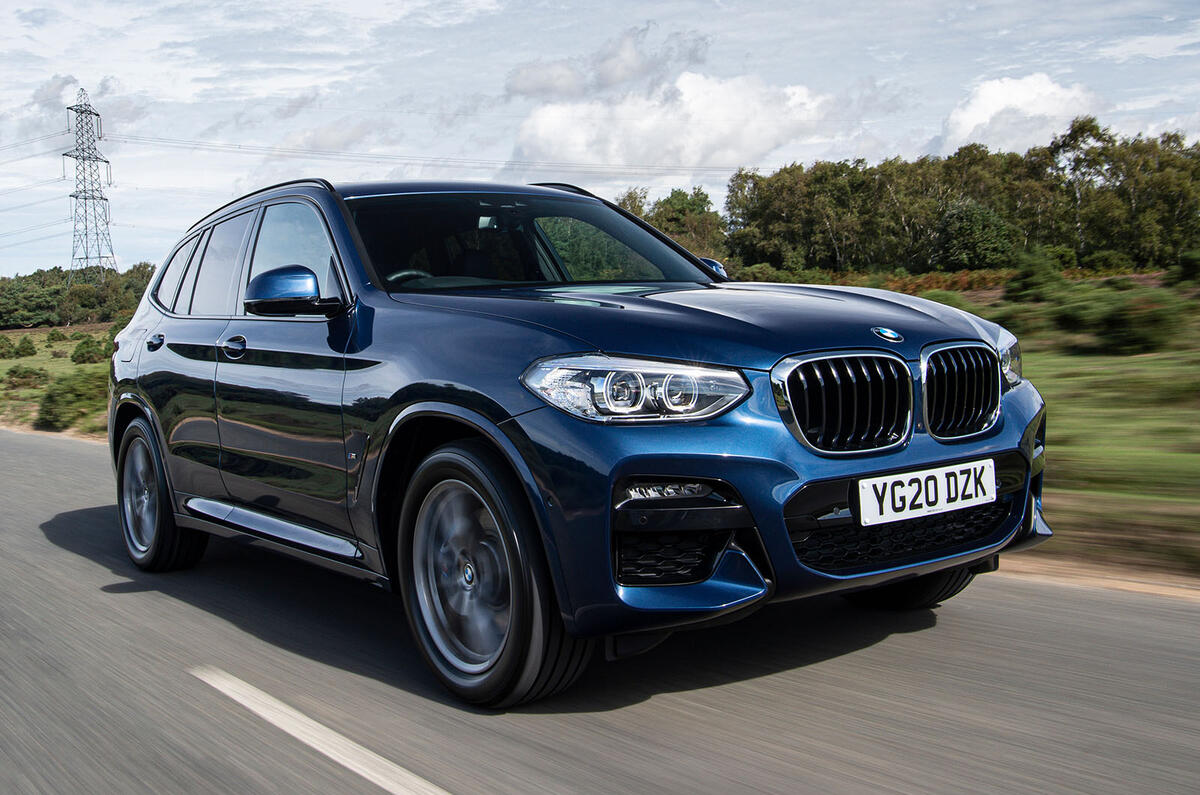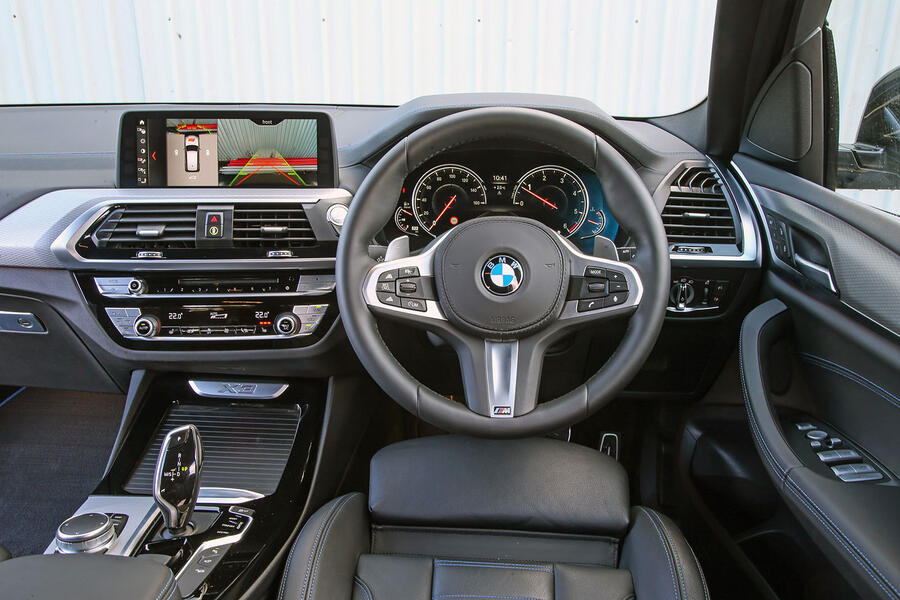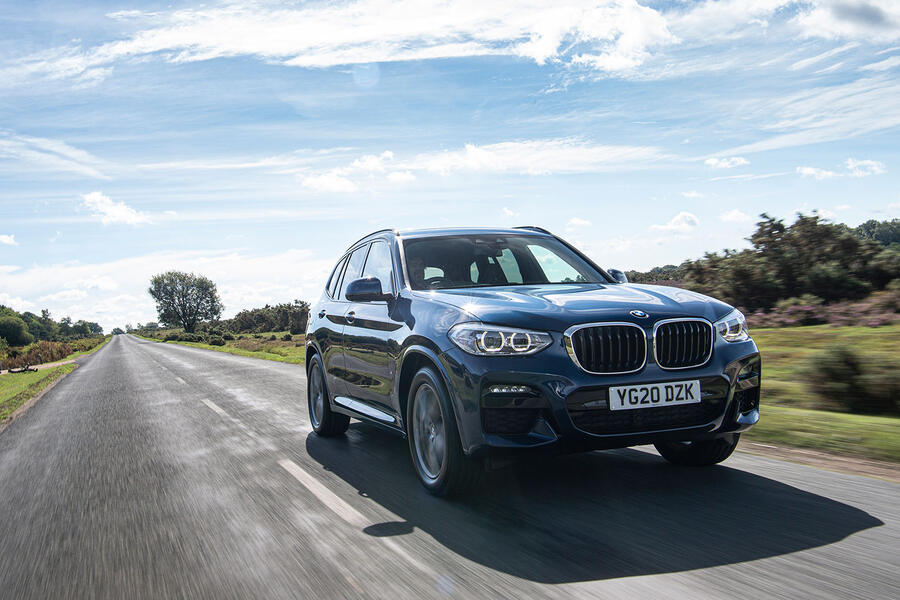What is it?
Here's another review on a plug-in hybrid executive option from a German premium brand, I’m afraid. Apparently, everybody wants one. It must be true, otherwise why would there suddenly be so many?
For now at least, the BMW X3 xDrive30e may be one of the more significant examples of this new tax-efficient band of cars, however. It’s a BMW SUV, which will make it appeal to a great many for its practicality; unlike some electrified luxury SUVs, it might just be cheap enough to sneak onto your company car scheme; but mainly because it’s one of very few cars of its kind that qualifies for a 10% benefit-in-kind rating.
Interested fleet ‘user-choosers’ who do some cross-shopping will notice that even the very latest versions of the equivalent Volvo XC60, Audi Q5 and Mercedes-Benz GLC ‘plug-ins’ don’t quite make it into the same tax bracket. The only other premium-branded, part-electrified, mid-sized SUV that does is the new Land Rover Discovery Sport P300e.
For private buyers, UK prices on the car start just below £50,000, making it a good chunk more expensive than any other four-cylinder X3 and about level on price with the six-cylinder BMW X3 30d diesel. Like most other X3s, it can be had in SE, xLine or M Sport trim, and in all versions it gets four-wheel drive and an eight-speed automatic gearbox.
There are one or two technical distinctions and stipulations associated with the car, though, of which canny customers ought to be aware. It uses the same combination of a 181bhp four-cylinder turbocharged petrol engine and a 108bhp electric motor for power as BMW's other 30e derivatives, plus the same 12kWh lithium ion drive battery, which in this case sits under the back seats.
Unlike in Volvo and PSA Group PHEVs, the motor is housed within the transmission and so drives through all four wheels, just as the piston engine does. But the X3's drive battery does displace the fuel tank, which is carried above the rear axle instead of in its usual berth, and that difference does adversely affect loadbay space just a little.
M Sport trim is likely to be the most popular choice in the UK market, with its racier styling touches, and in this case you can have it without worrying that the extra rolling resistance of the bigger wheels and tyres or the weight of the extra kit will tip your optioned-up car into the next tax bracket.
It's possible to put enough optional kit on an X3 xDrive30e that you will end up paying 12% BIK rather than 10%, but M Sport trim doesn’t tip the balance on its own – not even if you have it with the 20in wheels and adaptive dampers of the optional M Sport Plus pack.
If you don’t go for the optional adaptive suspension, be aware that 30e M Sport BMWs are the only ones that don’t get lowered, stiffened passive sport suspension as standard; they stick with the same springs and dampers as SE and xLine versions. Mostly because this is such a heavy car, I suspect. They do get enlarged M Sport brakes as standard, though, which would cost you extra on a 20d M Sport.

































Join the debate
Add your comment
I was thinking that the
Mix of photos
I think some of your interior photos are of a diesel, not the PHEV. Not really an issue that the rev counter is for a diesel, but the boot photo is misleading, there's a big step in the PHEV.
BMW reliability
That is, you can rely on it to catch fire when you plug it in.
xxxx wrote:
Do you have evidence that this is a common ocurrence?
underdrive
Have you had your head in the sand. Every motoring site, Auto car 15 oct, Global recall for every bmw phev because of fires.
xxxx wrote:
The recall you refererd to was a 'preventative measure' just to eliminate the potential risk they in the design of the battery, similar to Ford Kuga PHEV recall. No vehicle acutally caught fire, which makes your assertion that 'you can rely on it to catch fire' the hyperbolic BS that it is.
in which case
They only don't catch fire because bmw said don't plug them in. So just how realiable is that. How about you can rely on bmw to make a phev that cant be plugged in in case it catches fire
to make it clear
Not only can not plug them in, you cant use the paddles or manual mode. oh and a 330e has burned itself to death in a bmw dealership in prague whilst charging